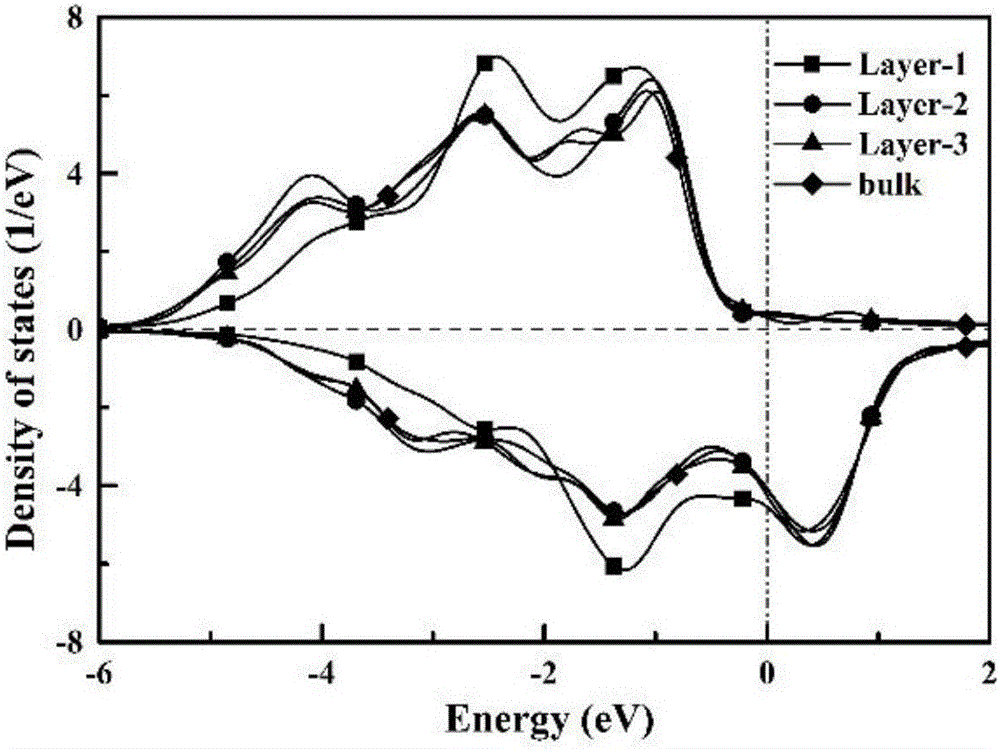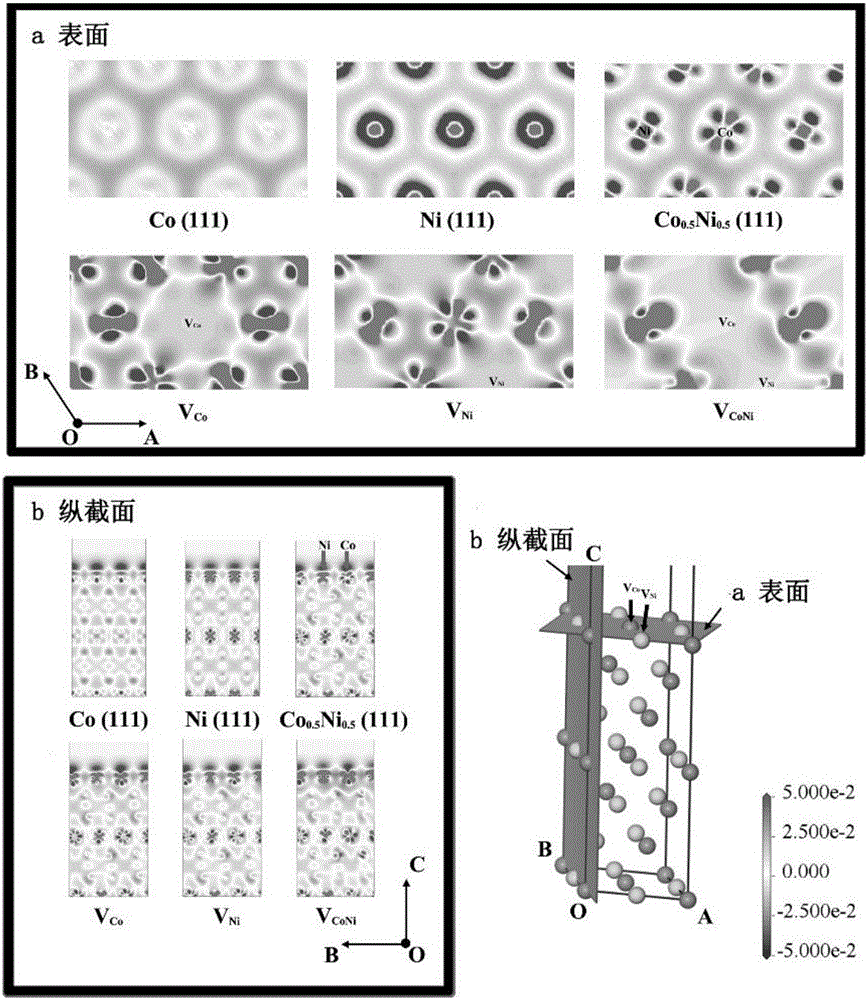Method for revealing nano bi-metal CoNi adsorption mechanism based on density functional theory
A technology of density functional theory and adsorption mechanism, applied in the field of high-efficiency adsorption mechanism of CoNi bimetallic nanoparticles, can solve the problems of difficult to meet the surface properties of nano-scale substances and reveal the reaction mechanism.
- Summary
- Abstract
- Description
- Claims
- Application Information
AI Technical Summary
Problems solved by technology
Method used
Image
Examples
Embodiment 1
[0034] Mix 0.4g of cobalt chloride hexahydrate (or nickel chloride hexahydrate) with 0.2g of strong reducing agent -- sodium borohydride (NaBH 4 ) was mixed evenly by grinding, and dissolved in 20ml of deionized water until the reaction was complete and no air bubbles were generated. After the reaction was complete, the black product (Co or Ni single metal nanoparticles) in the solution was separated with a magnet, and the black product was washed three times with deionized water and ethanol, respectively, and dried at room temperature for 24 h. Add 5 mg of the prepared sample into 50 mL of Congo red solution, and mechanically stir at room temperature until the solution becomes colorless. Four groups of parallel experiments were carried out during the test, and the mass concentrations of the selected Congo red solutions were: 30, 50, 80 and 100mg L -1 ; Take 2mL solution at the specified time point (1min, 2min, 5min, 10min and 20min) to measure its concentration after adsorpt...
Embodiment 2
[0036] Mix 0.2g cobalt chloride hexahydrate and 0.2g nickel chloride hexahydrate evenly, then add 0.2g sodium borohydride (NaBH 4 ) powder, grind and mix evenly, dissolve in 20ml of deionized water, until the reaction is complete, no bubbles will be generated. After the reaction was complete, the black product (CoNi bimetallic nanoparticles) in the solution was separated with a magnet, and the black product was washed three times with deionized water and ethanol respectively, and dried at room temperature for 24 hours. Add 5 mg of the prepared sample into 50 mL of Congo red solution, and mechanically stir at room temperature until the solution becomes colorless. Four groups of parallel experiments were carried out during the test, and the mass concentrations of the selected Congo red solutions were: 30, 50, 80 and 100mg L -1 ; Take 2mL solution at the specified time point (1min, 2min, 5min, 10min and 20min) to measure its concentration after adsorption. The amount of Congo r...
PUM
| Property | Measurement | Unit |
|---|---|---|
| Adsorption capacity | aaaaa | aaaaa |
Abstract
Description
Claims
Application Information
 Login to View More
Login to View More - R&D
- Intellectual Property
- Life Sciences
- Materials
- Tech Scout
- Unparalleled Data Quality
- Higher Quality Content
- 60% Fewer Hallucinations
Browse by: Latest US Patents, China's latest patents, Technical Efficacy Thesaurus, Application Domain, Technology Topic, Popular Technical Reports.
© 2025 PatSnap. All rights reserved.Legal|Privacy policy|Modern Slavery Act Transparency Statement|Sitemap|About US| Contact US: help@patsnap.com



